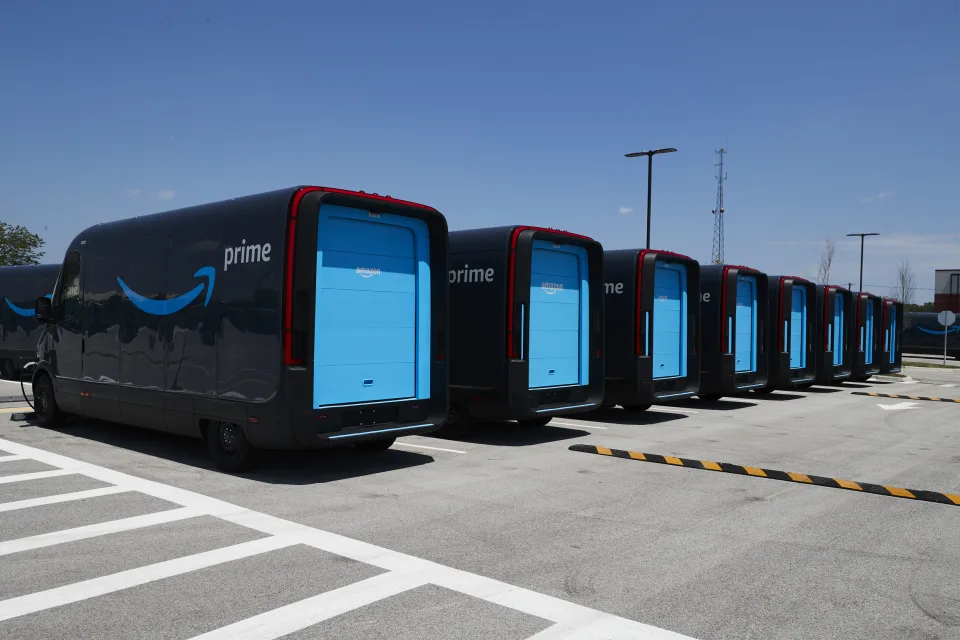
Rivian (RIVN) reported strong fourth quarter results after the bell on Thursday and came through on its goal of posting a “gross profit” for the quarter, with a smaller-than-expected full-year 2024 EBITDA (earnings before interest, taxes, depreciation, and amortization) loss to boot. The company also sees a smaller loss in 2025 compared to a year ago.
Rivian reported a gross profit of $170 million in the fourth quarter, primarily driven by “improvements in variable costs, revenue per delivered unit, and fixed costs,” the company said in a statement.
“This quarter we achieved positive gross profit and removed $31,000 in automotive cost of goods sold per vehicle delivered in Q4 2024 relative to Q4 2023,” Rivian CEO RJ Scaringe said in a statement. “Our focus on cost efficiency across the business is critical for the launch of our mass market product, R2. The R2 bill of materials is approximately 95% sourced and is expected to be approximately half that of the improved R1 bill of materials.”
In terms of guidance, Rivian sees its 2025 full-year adjusted EBITDA loss in the range of $1.7 billion to $1.9 billion, with vehicle deliveries between 46,000 and 51,000.
On the conference call, CFO Claire McDonough said the company expects fewer deliveries in Q1 due to seasonality and the effects of the wildfires on the state of California, where many Rivian purchases are made. McDonough said the company expects only 8,000 deliveries in Q1, and 14,000 units produced.
Rivian stock was up over 3% in after-hours trading, but pared some of those gains.
For the quarter, Rivian reported revenue of $1.73 billion versus $1.38 billion expected per Bloomberg consensus estimates, 32% higher than the $1.31 billion reported a year ago. The company reported an adjusted loss per share of $0.46, beating estimates for a $0.65 loss, with an adjusted EBITDA loss of $277 million, better than the $399.8 million expected.
For the year 2024, Rivian posted an adjusted EBITDA loss of $2.68 billion, lower than the $2.87 billion loss projected last quarter and an improvement compared to the $3.78 billion loss from a year ago.
In early January, the company said it produced 49,476 vehicles and delivered 51,579 in 2024. In Q4, Rivian produced 12,727 vehicles and delivered 14,183 vehicles.
Rivian said it had $5.29 billion in cash and cash equivalents, down from the $7.85 billion it had a year ago.
The fourth quarter was an interesting one for Rivian. The company announced an expansion of its partnership with Volkswagen (VWAGY) in November, with the German automaker pouring more money into a joint venture.
The joint venture, announced last June, will use Rivian’s electrical architecture — known as “zonal architecture” — and accompanying software stack to enable the launch of Rivian’s upcoming midsize R2 SUV in the first half of 2026.
In November, Rivian also revealed that it won a “conditional commitment” from the Department of Energy (DOE) for a $6.6 billion loan, highlighting Rivian’s improving capital condition. The loan, part of the DOE’s Advanced Technology Vehicles Manufacturing (ATVM) program, would support the construction of Rivian’s upcoming assembly plant located outside of Atlanta.
The new Trump White House, however, and the Department of Government Efficiency (DOGE) say they will scrutinize the deal, potentially putting the DOE loan to Rivian in limbo.
Another big wild card on the regulatory front is the status of the federal EV tax credit, which the Trump White House and Republican Party have indicated may be repealed. Pure-play automakers like Rivian, Lucid (LCID), and Tesla (TSLA) could be most affected by removal of the tax credit.
Finally, earlier this month Rivian said it would open up orders for its EDV commercial delivery van, which could open another revenue stream for a company looking to scale up, grow revenue, and cut costs.